12 Affordable Advertising Tins Beginners Can Start Collecting
Old advertising tins bring back a time when even simple containers were made to stand out. Their colors, lettering, and familiar logos make them fun pieces to collect. Many can still be found for a low price at flea markets or online. Starting with small, affordable tins lets beginners build a nostalgic collection without spending much.
This post may contain affiliate links, which helps keep this content free. Please read our disclosure for more info.
Coca-Cola Soda Tins
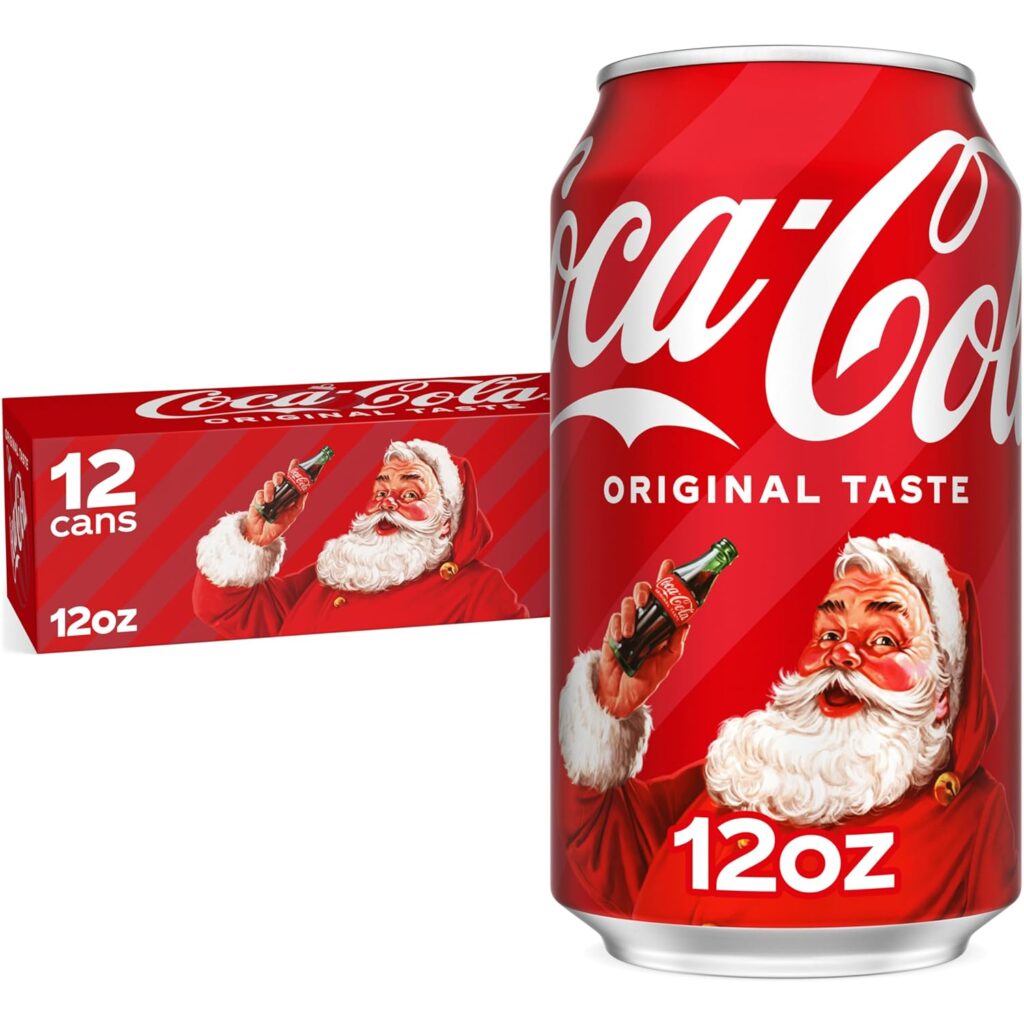
These tins often feature red backgrounds and white script logos that never go out of style. Some show seasonal artwork like Santa Claus or nostalgic vending machines. Small round versions once held candies or mints, while rectangular ones were used for general storage. Collectors love them for their bright color and the way they instantly recall mid-century kitchens.
When buying, look for clean paint and legible lettering since scratches can dull the shine. Most Coca-Cola tins from the 1950s to 1990s are easy to find and stay under $25. Keep an eye out for licensed holiday editions, which add charm without driving up the price. They display nicely in kitchen shelves or alongside soda bottles.
Hershey’s Cocoa Tins
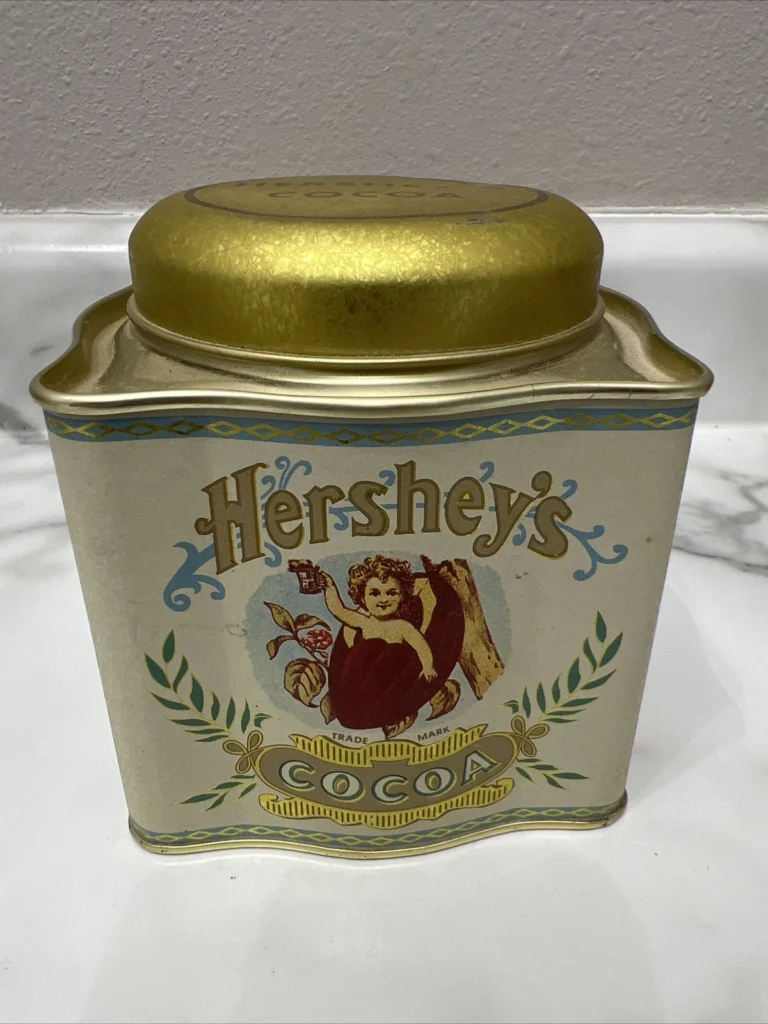
Hershey’s tins often come in shades of brown, cream, and gold with neat block lettering. Older versions have embossed sides or faint cocoa bean patterns that catch the light. These small tins once sat on pantry shelves, holding rich cocoa powder used in baking. Their classic design makes them an instant favorite for collectors who love food advertising.
Many can be found for less than $20 if the lid and label are intact. Faded paint or dents are common but acceptable if the logo remains clear. Try grouping several tins from different decades to show how Hershey’s branding evolved. They fit well in displays focused on early American grocery brands.
Planters Peanuts Tins
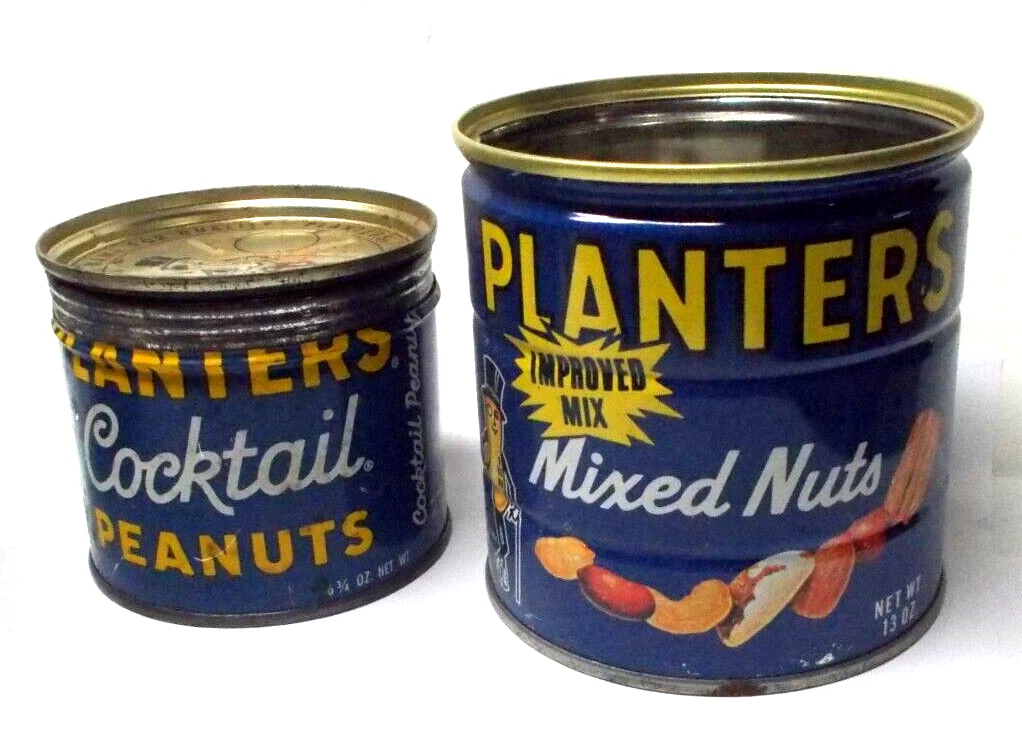
Mr. Peanut’s top hat and cane make these tins easy to spot. Most come in blue or yellow tones, featuring cheerful 1940s–1970s artwork. Larger tins once held mixed nuts, while smaller ones advertised peanuts or candy-coated varieties. The designs capture the fun, casual mood of mid-century snack culture.
Look for tins with strong color and clean edges since fading can dull the character. Many are affordable at flea markets, usually around $15 to $30. Those with lid illustrations or slogan variations tend to be more collectible. They add a playful note to any vintage kitchen or advertising shelf.
Lipton Tea Tins
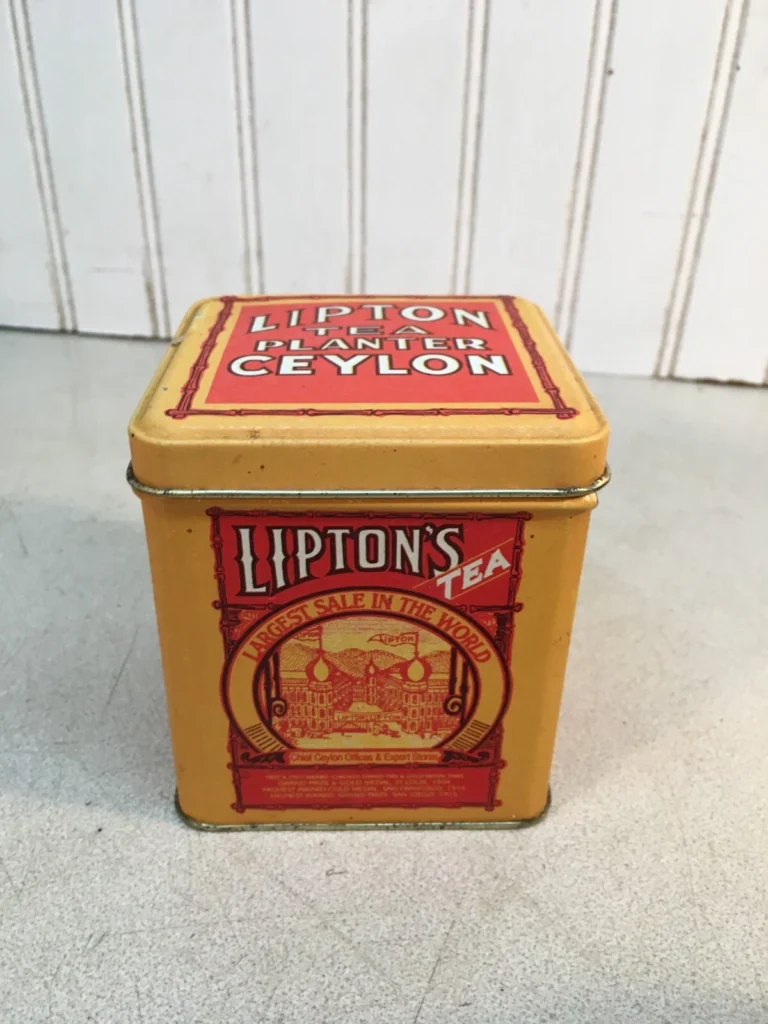
Lipton tins often have a clean, square design with yellow or green backgrounds and simple red lettering. Some show teapots or steaming cups in bright outlines. The design feels both homey and practical, reflecting decades of tea culture. Because they were made in large numbers, they’re easy to collect on a budget.
Most Lipton tins cost less than $15, especially the post-1960 versions. Seek out older British editions for more ornate typography. Faded edges add charm, while original lids keep value steady. A small row of them gives a warm, nostalgic accent to kitchen shelves.
Oxo Cubes Tins

These compact tins stand out with their bold red color and white block letters. Used for beef extract cubes, they were a staple in British homes through the mid-1900s. Some tins even include small recipe instructions inside the lid. Their sturdy design helped them survive decades of use, making them ideal for display.
Collectors can find common styles under $20, with wartime editions costing a bit more. The bright paint makes them pop when arranged beside other grocery tins. Slight rusting adds age character without lowering their appeal too much. They bring a touch of old-world charm to any kitchen-themed collection.
Blue Ribbon Coffee Tins
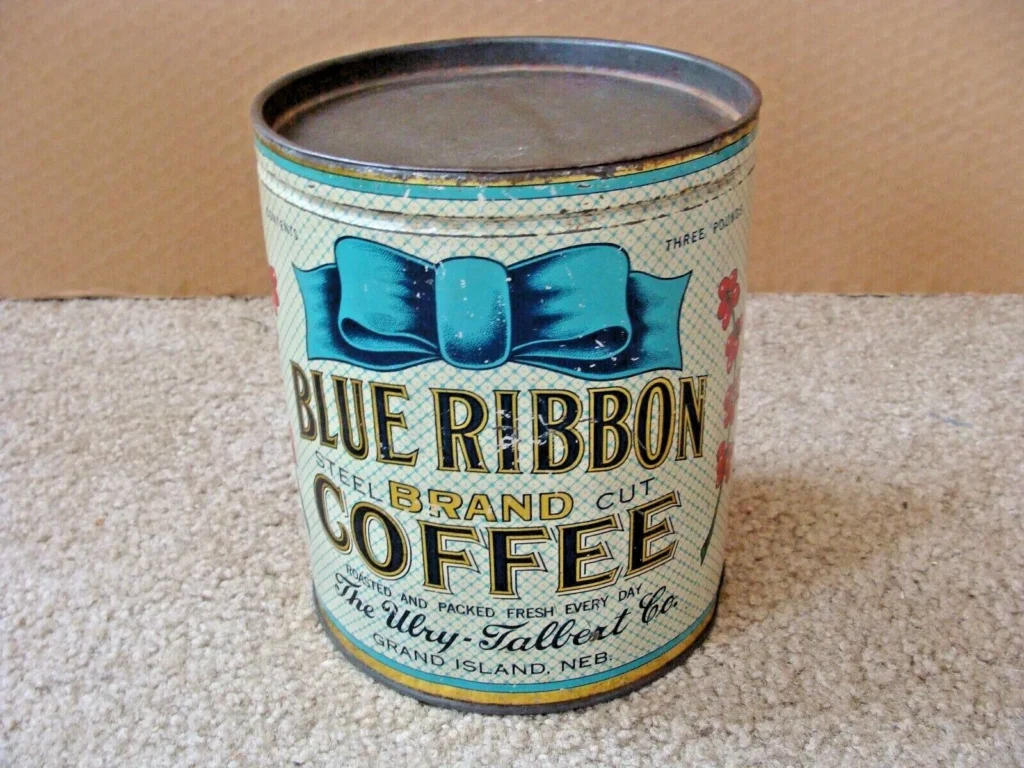
These coffee tins feature classic typography and rich blue backgrounds with touches of gold or cream. Their cylindrical shape and metal lids reflect the sturdy quality of older coffee packaging. Some versions have embossed text, giving them extra visual texture. They appeal to anyone drawn to early 20th-century kitchen design.
Most sell between $25 and $40, though smaller ones can be found for less. Watch for dents near the lid since that’s where wear usually shows. Tins with clear branding and minimal rust hold their value well. They look great next to old coffee grinders or enamel mugs in a vintage display.
Quaker Oats Tins

These tins carry the smiling Quaker man that became one of the most recognizable food logos. The cylindrical containers once held oats or cereal, and the designs shifted slightly by decade. The mix of blue, white, and red tones gives them a clean and classic appearance. Their durability means many examples still look sharp after decades.
Prices typically fall between $15 and $35 depending on age and condition. Collectors like pairing older tins with promotional items like recipe cards or measuring cups. Be wary of rusted bottoms, which are common in early versions. Even with wear, these tins capture the wholesome look of vintage breakfast branding.
Campbell’s Soup Tins
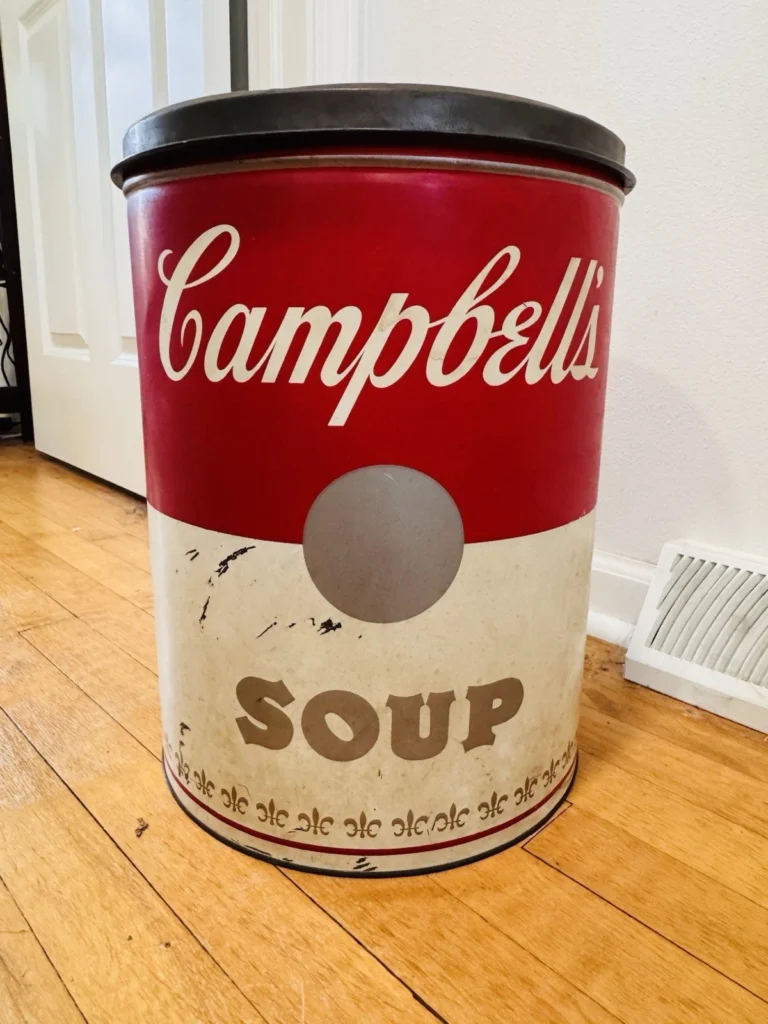
These tins echo the red-and-white label made famous by Andy Warhol. Many were produced as commemorative pieces or for limited-edition runs. Some small tins even came filled with cookies or candy. The clean layout and nostalgic colors make them appealing to both pop art and kitchenware collectors.
They’re easy to find for under $20 in good condition. Limited designs tied to anniversaries or art promotions can be slightly pricier. Minor scuffs are fine, but peeling decals reduce value. Their uniform look makes them perfect for bright, cheerful shelf displays.
Player’s Navy Cut Tobacco Tins
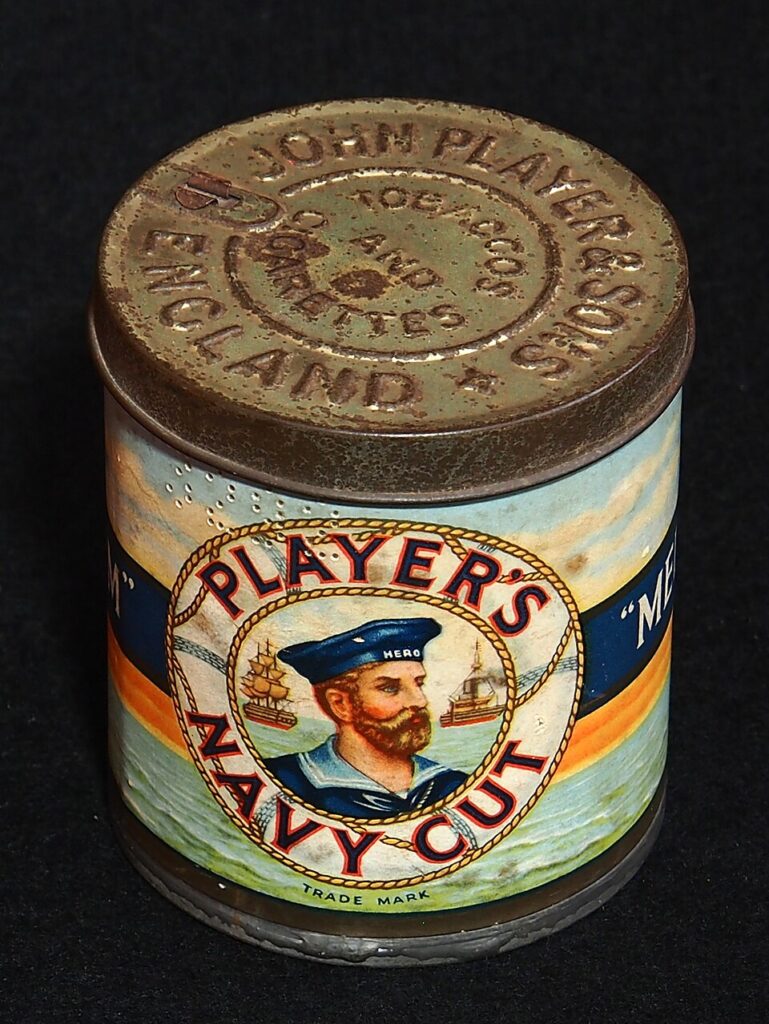
These compact tins often show a sailor framed by a lifebuoy, set against navy or beige backgrounds. The artwork speaks of old maritime themes and British tobacco history. Many still carry faint traces of tobacco scent when opened. Their small size makes them ideal pocket collectibles.
Common examples cost around $10 to $25 and turn up often at antique fairs. Tins with intact hinges and strong color are more desirable. Some collectors group them by label variation or country of origin. Their weathered finish adds authenticity rather than detracting from value.
Colman’s Mustard Tins
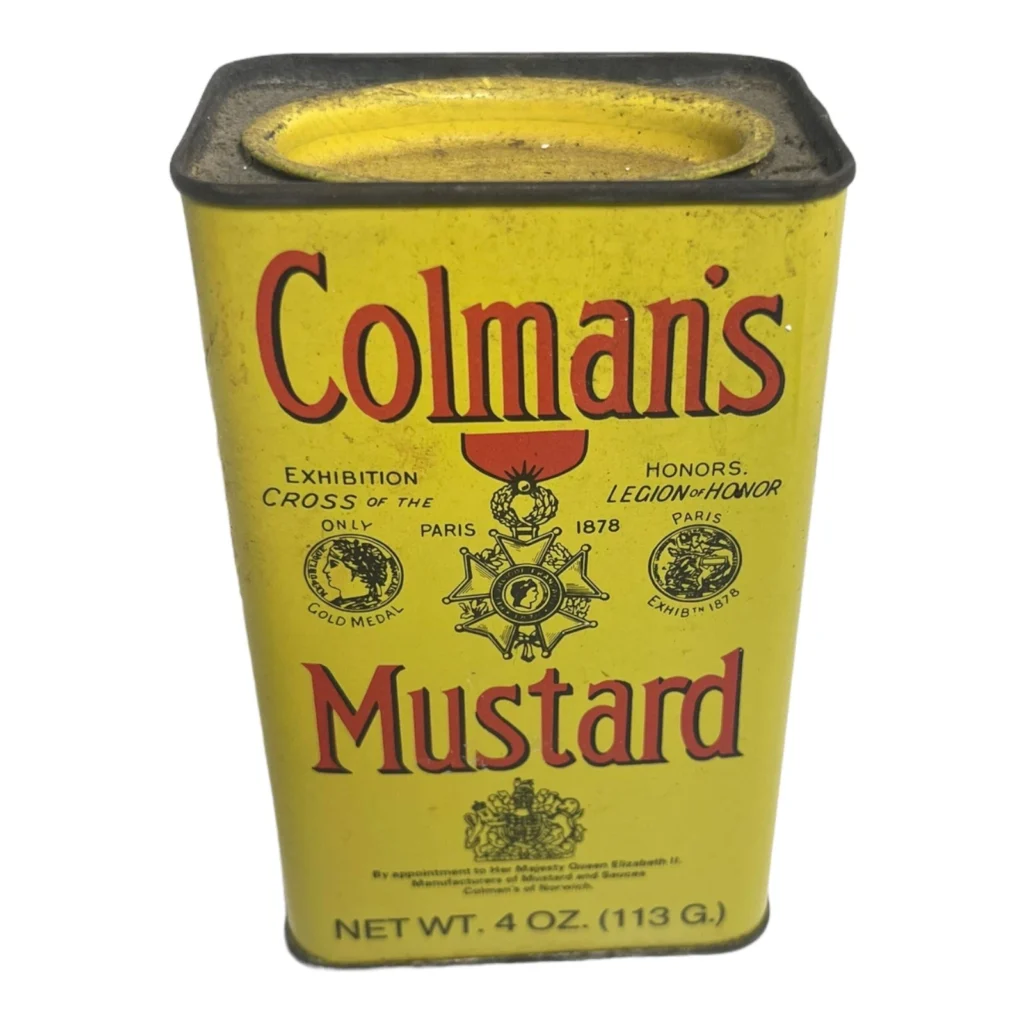
These tins are instantly recognizable with their bright yellow bodies and bold red lettering. They once held dry mustard powder used in kitchens worldwide. The design barely changed through decades, which makes them iconic among collectors. Their cheerful color brightens any shelf or display.
Small tins can be found for less than $15, while older embossed versions may reach $40. Check for clear logos and tight-fitting lids. Light scratches or minor rusting are expected but acceptable. A set of Colman’s tins lined up adds a burst of vintage charm to any kitchen.
Wrigley’s Gum Tins
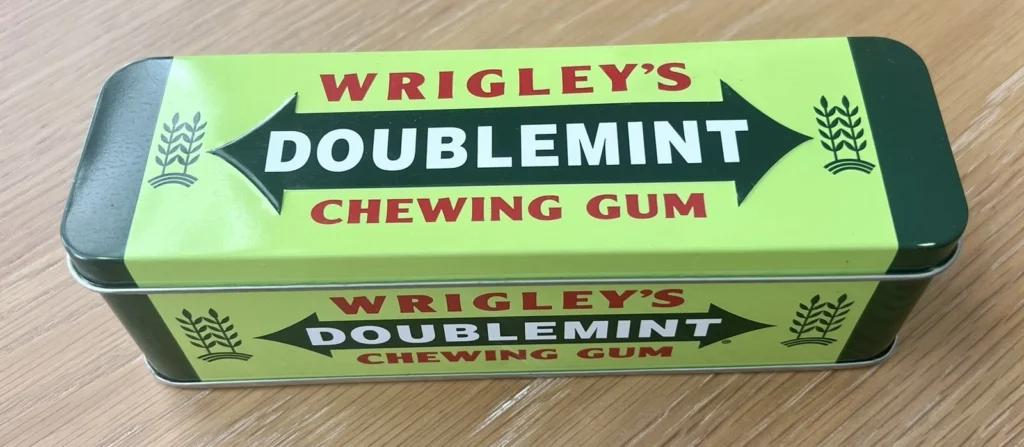
These small tins once held sticks or pellets of chewing gum. They feature simple but colorful designs with bright reds, greens, or whites. Some carry slogans like “Spearmint” or “Doublemint” across the lid in crisp lettering. They’re tiny pieces of mid-century Americana that fit easily into any collection.
Expect to pay between $10 and $20 for good examples. Look for tins without dents or deep scratches since their small size shows damage more clearly. They’re fun to mix with other candy or soda tins for visual variety. Even a few lined up can tell the story of early advertising style.
Luzianne Coffee or Tea Tins
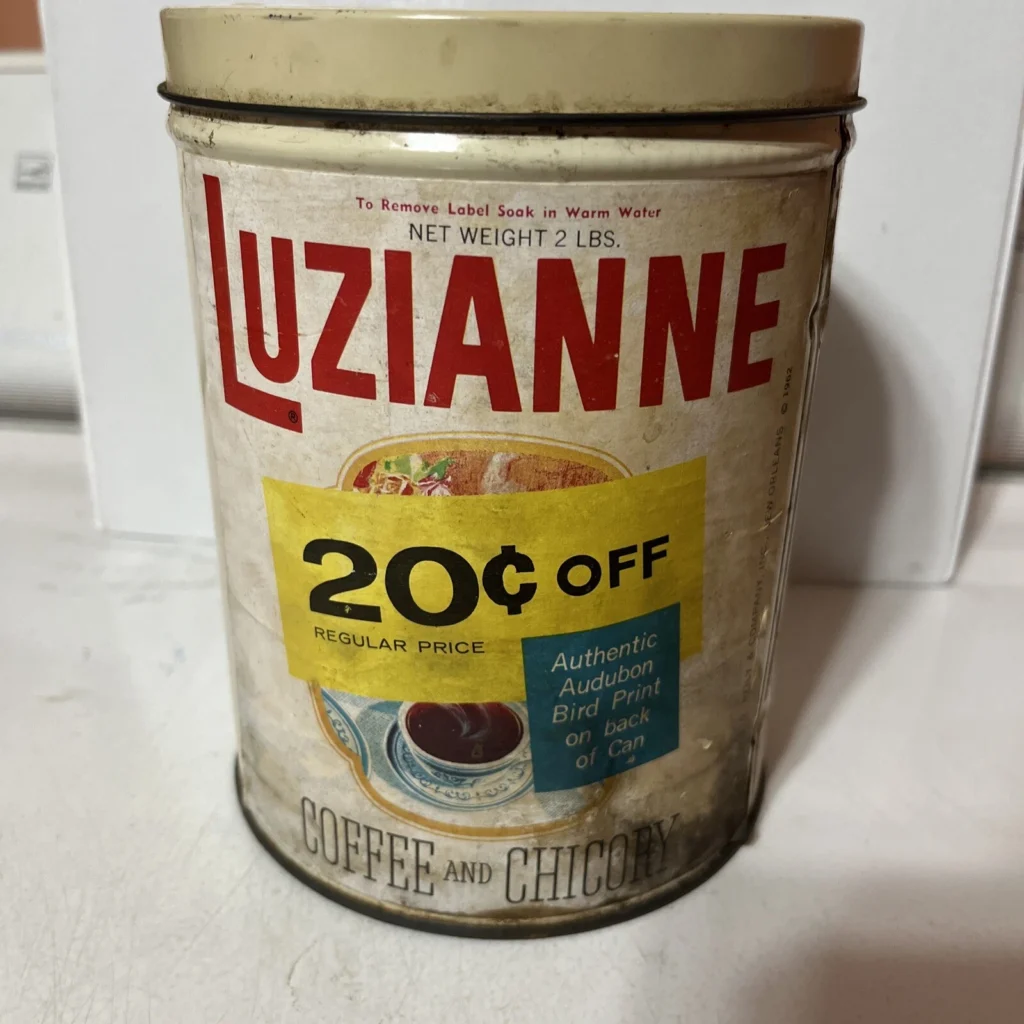
Luzianne tins are known for their Southern flair, often using red, gold, and cream tones. Many feature ornate script or plantation-style imagery from the early 1900s. The brand’s heritage gives these tins strong regional charm. They’re slightly less common but still affordable.
Prices range from $20 to $40, depending on size and condition. Avoid heavily rusted bottoms and seek tins with crisp graphics. Collectors enjoy pairing them with other coffee brands for variety. Their vintage lettering makes them stand out in any collection.
This article originally appeared on Avocadu.
